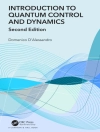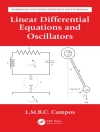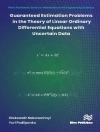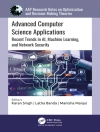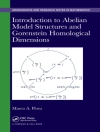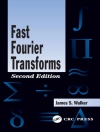An accessible introduction to metaheuristics and optimization,
featuring powerful and modern algorithms for application across
engineering and the sciences
From engineering and computer science to economics and
management science, optimization is a core component for problem
solving. Highlighting the latest developments that have evolved in
recent years, Engineering Optimization: An Introduction with
Metaheuristic Applications outlines popular metaheuristic
algorithms and equips readers with the skills needed to apply these
techniques to their own optimization problems. With insightful
examples from various fields of study, the author highlights key
concepts and techniques for the successful application of
commonly-used metaheuristc algorithms, including simulated
annealing, particle swarm optimization, harmony search, and genetic
algorithms.
The author introduces all major metaheuristic algorithms and
their applications in optimization through a presentation that is
organized into three succinct parts:
* Foundations of Optimization and Algorithms
provides a brief introduction to the underlying nature of
optimization and the common approaches to optimization problems,
random number generation, the Monte Carlo method, and the Markov
chain Monte Carlo method
* Metaheuristic Algorithms presents common
metaheuristic algorithms in detail, including genetic algorithms,
simulated annealing, ant algorithms, bee algorithms, particle swarm
optimization, firefly algorithms, and harmony search
* Applications outlines a wide range of
applications that use metaheuristic algorithms to solve challenging
optimization problems with detailed implementation while also
introducing various modifications used for multi-objective
optimization
Throughout the book, the author presents worked-out examples and
real-world applications that illustrate the modern relevance of the
topic. A detailed appendix features important and popular
algorithms using MATLAB® and Octave software packages, and a
related FTP site houses MATLAB code and programs for easy
implementation of the discussed techniques. In addition, references
to the current literature enable readers to investigate individual
algorithms and methods in greater detail.
Engineering Optimization: An Introduction with Metaheuristic
Applications is an excellent book for courses on optimization
and computer simulation at the upper-undergraduate and graduate
levels. It is also a valuable reference for researchers and
practitioners working in the fields of mathematics, engineering,
computer science, operations research, and management science who
use metaheuristic algorithms to solve problems in their everyday
work.
Daftar Isi
List of Figures.
Preface.
Acknowledgments.
Introduction.
PART I FOUNDATIONS OF OPTIMIZATION AND ALGORITHMS.
1 A Brief History of Optimization.
1.1 Before 1900.
1.2 20th Century.
1.3 Heuristics and Metaheuristics.
Exercises.
2 Engineering Optimization.
2.1 Optimization.
2.2 Type of Optimization.
2.3 Optimization Algorithms.
2.4 Metaheuristics.
2.5 Order Notation.
2.6 Algorithm Complexity.
2.7 No Free Lunch Theorems.
Exercises.
3 Mathematical Foundations.
3.1 Upper and Lower Bounds.
3.2 Basic Calculus.
3.3 Optimality.
3.4 Vector and Matrix Norms.
3.5 Eigenvalues and Definiteness.
3.6 Linear and Afine Functions.
3.7 Gradient and Hessian Matrices.
3.8 Convexity.
Exercises.
4 Classic Optimization Methods I.
4.1 Unconstrained Optimization.
4.2 Gradient-Based Methods.
4.2.1 Newton’s Method.
4.3 Constrained Optimization.
4.4 Linear Programming.
4.5 Simplex Method.
4.6 Nonlinear optimization.
4.7 Penalty Method.
4.8 Lagrange Multipliers.
4.9 Karush-Kuhn-Tucker Conditions.
Exercises.
5 Classic Optimization Methods II.
5.1 BFGS Method.
5.2 Nelder-Mead Method.
5.3 Trust-Region Method.
5.4 Sequential Quadratic Programming.
Exercises.
6 Convex Optimization.
6.1 KKT conditions.
6.2 Convex Optimization Examples.
6.3 Equality Constrained Optimization.
6.4 Barrier Functions.
6.5 Interior-Point Methods.
6.6 Stochastic and Robust Optimization.
Exercises.
7 Calculus of Variations.
7.1 Euler-Lagrange Equation.
7.2 Variations with Constraints.
7.3 Variations for Multiple Variables.
7.4 Optimal Control.
Exercises.
8 Random Number Generators.
8.1 Linear Congruential Algorithms.
8.2 Uniform Distribution.
8.3 Other Distributions.
8.4 Metropolis Algorithms.
Exercises.
9 Monte Carlo Methods.
9.1 Estimating fi.
9.2 Monte Carlo Integration.
9.3 Importance of Sampling.
Exercises.
10 Random Walk and Markov Chain.
10.1 Random Process.
10.2 Random Walk.
10.3 Lfievy Flights.
10.4 Markov Chain.
10.5 Markov Chain Monte Carlo.
10.6 Markov Chain and Optimisation.
Exercises.
PART II METAHEURISTIC ALGORITHMS.
11 Genetic Algorithms.
11.1 Introduction.
11.2 Genetic Algorithms.
Exercises.
12 Simulated Annealing.
12.1 Annealing and Probability.
12.2 Choice of Parameters.
12.3 SA Algorithm.
12.4 Implementation.
Exercises.
13 Ant Algorithms.
13.1 Behaviour of Ants.
13.2 Ant Colony Optimization.
13.3 Double Bridge Problem.
13.4 Virtual Ant Algorithm.
Exercises.
14 Bee Algorithms.
14.1 Behavior of Honey Bees.
14.2 Bee Algorithms.
14.3 Applications.
Exercises.
15 Particle Swarm Optimization.
15.1 Swarm Intelligence.
15.2 PSO algorithms.
15.3 Accelerated PSO.
15.4 Implementation.
15.5 Constraints.
Exercises.
16 Harmony Search.
16.1 Music-Based Algorithms.
16.2 Harmony Search.
16.3 Implementation.
Exercises.
17 Firey Algorithm.
17.1 Behaviour of Fireies.
17.2 Firey-Inspired Algorithm.
17.3 Implementation.
Exercises.
PART III APPLICATIONS.
18 Multiobjective Optimization.
18.1 Pareto Optimality.
18.2 Weighted Sum Method.
18.3 Utility Method.
18.4 Metaheuristic Search.
18.5 Other Algorithms.
Exercises.
19 Engineering Applications.
19.1 Spring Design.
19.2 Pressure Vessel.
19.3 Shape Optimization.
19.4 Optimization of Eigenvalues and Frequencies.
19.5 Inverse Finite Element Analysis.
Exercises.
Appendices.
Appendix A: Test Problems in Optimization.
Appendix B: Matlab Programs.
B.1 Genetic Algorithms.
B.2 Simulated Annealing.
B.3 Particle Swarm Optimization.
B.4 Harmony Search.
B.5 Firey Algorithm.
B.6 Nonlinear Optimization.
B.6.1 Spring Design.
B.6.2 Pressure Vessel.
Appendix C: Glossary 283.
Appendix D: Problem Solutions 305.
References 333.
Index 343.
Tentang Penulis
XIN-SHE YANG, Ph D, is Senior Research Fellow in the Department of Engineering at Cambridge University (United Kingdom). The Editor-in-Chief of International Journal of Mathematical Modeling and Numerical Optimization (IJMMNO), Dr. Yang has published more than sixty journal articles in his areas of research interest, which include computational mathematics, metaheuristic algorithms, numerical analysis, and engineering optimization.


